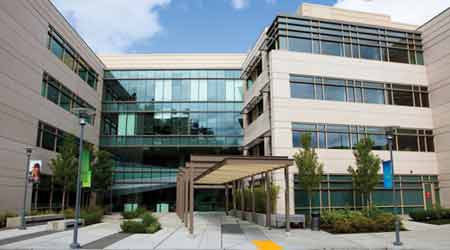 Using fault detection and diagnostics to crunch big data from building systems, Microsoft has saved millions of dollars at its Redmond campus.Microsoft
Using fault detection and diagnostics to crunch big data from building systems, Microsoft has saved millions of dollars at its Redmond campus.MicrosoftEnergy Innovation Driven By Buildings Industry
Second of a three-part article on how smart grid technology has dramatically changed how FMs use and analyze energy.
Today, energy innovation is being driven by the building industry more than the electric utilities, and facility managers are getting paid for the risk of adopting new technology with dramatic cost savings. Consider analytics. Many think first of fault detection and diagnostics, which analyzes building data to find possible performance problems like stuck dampers, but there are other applications. Energy analytics applications can also produce cost saving benefits. Other analytics tools can be used to evaluate service contractors, track sustainability goals, and help understand building capital asset value.
Tim Dettlaff, senior vice president and general manager with Ameresco, says, “Asset sustainability is critical because it’s at the intersection of predictive life cycle forecasts and energy conservation initiatives. As buildings age, so do the building systems supporting them. If aging infrastructure goes unattended, deferred maintenance backlogs can place buildings at risk. Big data must include life cycle costs and models of all energy- and non-energy-related systems.”
He says that analytics and life cycle costing help prove business cases for capital investments. “For example, if an energy-related building system, at end of life, is replaced with something energy efficient, an opportunity arises to explore alternative capital strategies. Integrating life cycle methodology into big data greatly enhances the decision making process.”
For technologies developed in the last decade, benefits go beyond energy savings and cost reduction; other gains include improved comfort, longer equipment life, and energy resilience. Marc Petock, a Project Haystack founding member and vice president of marketing at Lynxspring, calls these outputs “impact drivers” for buildings. Project Haystack is an open source initiative to develop naming conventions and taxonomies for building equipment and operational data.
Buildings apply technology in many ways. Microsoft, for example, created “the smartest corporate campus in the world” through an “IoT meets big data” approach. Darrell Smith, former Microsoft director of facilities and energy, has often said, "Give me a little data, and I’ll tell you a little. Give me a lot of data, and I’ll save the world." This data-driven software solution saved millions in operating costs over 125 buildings. That data might not have been available without the confluence of elements like BAS, BACnet, integration, middleware, meters, and analytics.
Related Topics:














